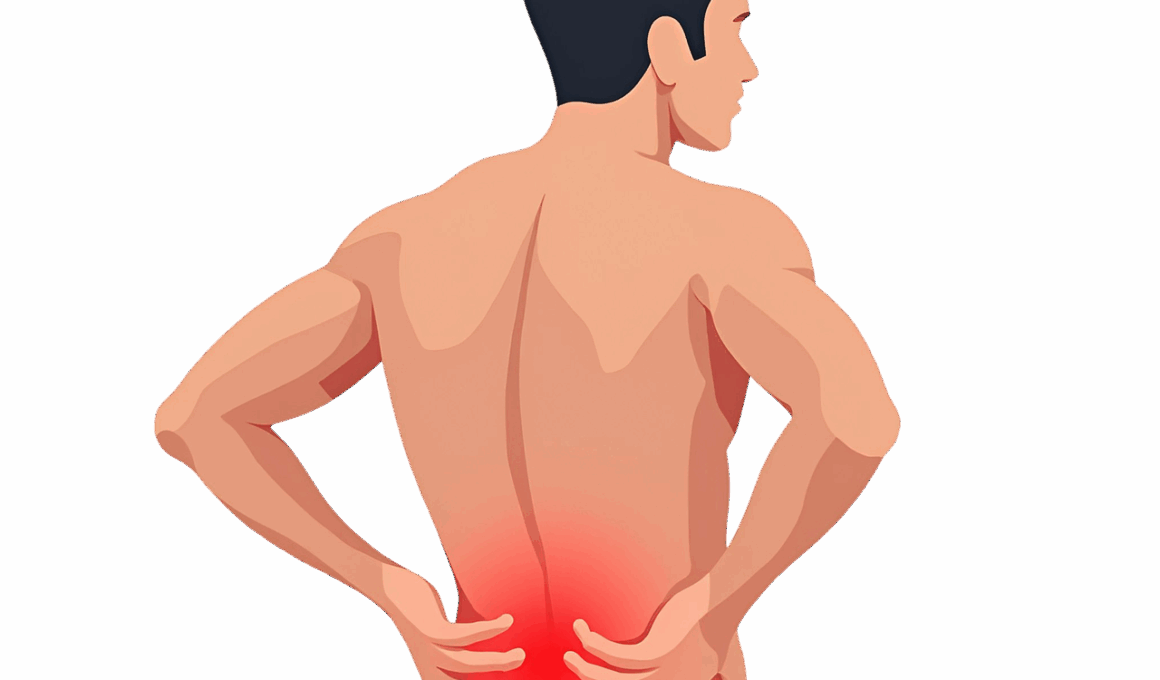Preventing Lower Back Pain During CrossFit Workouts
Lower back pain is a common issue among CrossFit athletes, often stemming from improper form and technique. The high-intensity nature of CrossFit can lead to injuries if movements are not performed correctly. Tiered training schedules can complicate these issues, as athletes push their limits without proper recovery. It’s essential to incorporate preventative measures to address these issues and maintain overall health. First, understanding your body’s limits is crucial. Know when to stop or reduce intensity to avoid strain. Secondly, warming up properly increases flexibility and prepares your muscles. A consistent routine should include dynamic stretches and mobility exercises targeting the back and hips. This approach can help reduce tightness, making exercises easier and more effective. Moreover, engaging in strength training before jumping into CrossFit can help develop the muscles necessary to support your back during lifts. This preparation can provide a solid foundation for progression, so consider consulting professionals for advice. With these foundational strategies in place, you can significantly reduce the risk of injury and improve your overall CrossFit experience.
Proper technique is paramount when performing CrossFit movements, especially those involving the lower back. Using incorrect form during deadlifts and squats is a common cause of injury. To master these movements, consider working with a coach or attending classes focusing on technique. Coaching can provide immediate feedback that may help identify poor habits that could lead to injury. This methodical focus on technique should not be overlooked, as a solid grasp of movement patterns is essential. Moreover, integrating recovery into your routine is equally vital. Adequate rest, hydration, and nutrition support muscle repair and overall health. Allowing the body time to recover can prevent overuse injuries that commonly afflict CrossFit practitioners. Consider adding yoga or pilates to your routine, as these practices enhance flexibility and core strength while promoting body awareness. Significant emphasis is often placed on strength training, but equally important is balance and agility training, which can also contribute to fewer injuries. Regular assessments of your physical condition by a professional can provide insight into areas needing attention, furthering your injury prevention efforts.
Incorporating Mobility Work
Mobility work is a critical component in preventing lower back pain during CrossFit workouts. Improving mobility in the hips, thoracic spine, and ankles can significantly reduce the stress placed on the lower back. Allocating time to perform targeted mobility exercises is essential for maintaining joint health and enhancing overall performance. Incorporate foam rolling into your routine to alleviate muscle tightness and improve blood flow. Focus specifically on the hip flexors, hamstrings, and quadratus lumborum areas. Evidence suggests that using a foam roller can reduce tightness that adversely affects movement patterns. Additionally, dynamic stretches before workouts can be beneficial. These movements prepare your body for the actions ahead, increasing flexibility and range of motion. Include exercises like leg swings, hip circles, and torso rotations to create a more effective warm-up. Some athletes may also benefit from using resistance bands to assist in mobility drills. Moreover, integrating adequate cooldown stretches helps to maintain flexibility post-workout. Continuous attention to mobility ensures that your body is equipped to handle the rigors of CrossFit.
Using accessories during workouts can play a significant role in reducing the risk of lower back pain. Consider incorporating lifting belts and knee sleeves, which offer vital support during intense lifting sessions. These accessories can help stabilize the trunk and prevent excessive load on the lower back. However, it’s crucial to use them correctly and not rely solely on them, as developing natural strength is essential. To further solidify your training, including core strengthening exercises in your regimen is recommended. A strong core can provide added stability to the lower back during lifts. Exercises like planks, hanging leg raises, and various forms of crunches are excellent choices for building core strength. Incorporating these exercises at least twice a week can enhance overall stability while performing more intense CrossFit workouts. In addition to strength training, engaging in balance training can enhance awareness of body positioning and improve form. This practice helps to control movements more effectively, thus preventing injury. A balanced approach to training that includes strength, mobility, and stability is necessary for injury prevention.
Listening to Your Body
Listening to your body is one of the most crucial aspects of avoiding injuries in CrossFit. It’s essential to be aware of your body’s signals and recognize when something feels off. Ignoring pain can lead to significant injuries over time. Consequently, if you experience any discomfort during your workouts, don’t hesitate to modify your exercises or reduce weight. Conversations with fellow athletes and coaches about sensations experienced during workouts can also provide insights and support a safer training environment. Keep in mind, consistent feedback from your training partners can further enhance body awareness. Moreover, creating a training log can aid in tracking progress over time. Reflecting on past workouts allows you to identify patterns in pain or discomfort. This reflection is particularly valuable for learning your limits and establishing achievable goals. Additionally, rewarding yourself for making positive changes in your training can foster a beneficial mindset. Celebrate milestones, like completing a benchmark workout with improved form. Remember, it’s essential to prioritize long-term health and injury prevention over immediate performance gains.
The role of nutrition in injury prevention should not be overlooked. A well-balanced diet contributes to overall fitness and recovery after CrossFit workouts. Proper nutrition can support muscle repair and maintain energy levels, which are crucial for high-intensity training. Focus on consuming a balance of proteins, carbohydrates, and fats to fuel your workouts effectively. Post-workout nutrition is particularly critical, as it aids in recovery and replenishes energy stores. Consider including protein-rich foods or supplements in your post-workout meal to expedite recovery. Staying properly hydrated is equally important. Dehydration can lead to fatigue and muscle cramping, which increases the likelihood of injury. Monitoring your water intake, especially during intense sessions, can keep your body functioning optimally. Furthermore, consider the timing of your meals around workouts. Eating the right foods before exercising can enhance performance and minimize the risk of injury. If you’re struggling with nutrition or hydration, consult a professional. A dietitian can help create an individualized plan tailored to your needs based on your training regimen.
Conclusion
In conclusion, preventing lower back pain during CrossFit workouts requires dedication and awareness. Adhering to proper techniques, focusing on mobility work, and listening to your body can significantly reduce injury risks. Finding the right balance of strength and recovery is essential to foster a conducive workout environment. Remember that consistent practice of core-strengthening exercises aids in maintaining stability and preventing injuries. Accessories, such as lifting belts, can offer additional support but should not replace the effort of developing proper technique and strength on your own. Nutrition and hydration also contribute to being injury-free; prioritize these as integral parts of your training regimen. By incorporating these strategies into your routine, you can optimize your performance while minimizing your chances of lower back pain. Continuous self-assessment and adjustments based on your body’s feedback play a major role in long-term health in any training program. Lastly, don’t hesitate to reach out for professional guidance if needed. Engaging with coaches or healthcare professionals can provide valuable insights and foster a safe and effective approach to fitness.
In summation, maintaining proper health and avoiding lower back pain during CrossFit workouts is a multifaceted process requiring diligence. Implementing components such as mobility work, strength training, proper nutrition, and timely recovery strategies can all contribute to safer workouts. The journey to fitness is personal and varies significantly for each athlete. Listening to your body and learning through experience will guide your decision-making throughout your CrossFit journey. Adopting an injury-prevention mindset will significantly enhance your experience and longevity in the sport. Take the time to create and reflect on your injury prevention strategies while remaining flexible to adapt based on how your body feels. CrossFit is about community and growth, engaging with others and sharing knowledge can amplify your success. Remember, fitness should be enjoyable, and addressing the elements discussed here can help create a fulfilling fitness experience. Prioritizing health and wellness will allow you to fully enjoy everything CrossFit has to offer. By focusing on injury prevention, you can achieve your fitness goals and remain in the game longer, ultimately leading to an enriched life.


